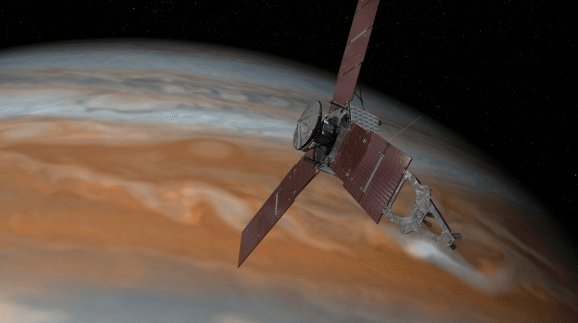NASA’s space probe, Juno, has managed to get into Jupiter’s orbit, said a report that reached NASA’s Jet Propulsion Laboratory at 11:54 PM Eastern Time. There were cheers at the lab when the news was initially broken.
The final manoeuvre, which lasted 35 minutes starting from 11:18 pm, was the result of a five-year voyage in outer space, and even more years of painstaking labour by the JPL team.
From the 5th of August 2011, the space probe had been drifting towards Jupiter. The most difficult art of the project was syncing the probe with Jupiter’s gravity.
It had to switch on its engines upon reaching exactly 2,609 miles from Jupiter to be successful. If the speed was not right, it was going to pass the planet and the entire mission was going to be a failure. With the right velocity, the probe was going to perfectly resume orbiting Jupiter.
The Juno has its most delicate parts stored in titanium vaults from protection from the intense radiation that surrounds the planet. Orbiting the planet would mean exposure to destructive radiation.
Main engine burn is go. I’m burnin', burnin', burnin' for you, #Jupiter. pic.twitter.com/b3SHm3Gphj
— NASA's Juno Mission (@NASAJuno) July 5, 2016
To further make this mission difficult, it takes 49 minutes for signals coming from Jupiter’s position to reach the earth. Therefore, for NASA to make any corrections in case of any mistakes, they would be 49 minutes late. Then the signals from NASA would also take 49 minutes to reach the probe which would make everything worse.

Juno’s is equipped with 9 instruments which are currently off to safeguard them until they are ready for orbital insertion. Since the Juno is now in orbit, it will start collecting data once it starts going around the planet. A lot of information, including fresh Jupiter images, will be made available soon.



